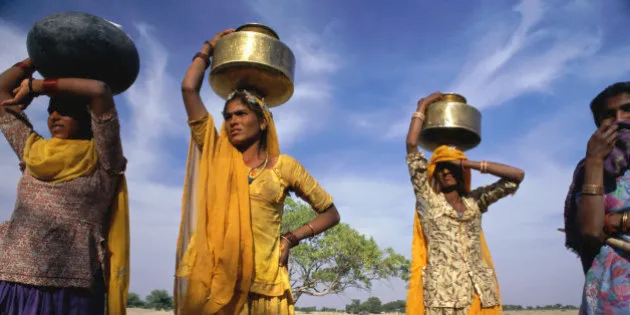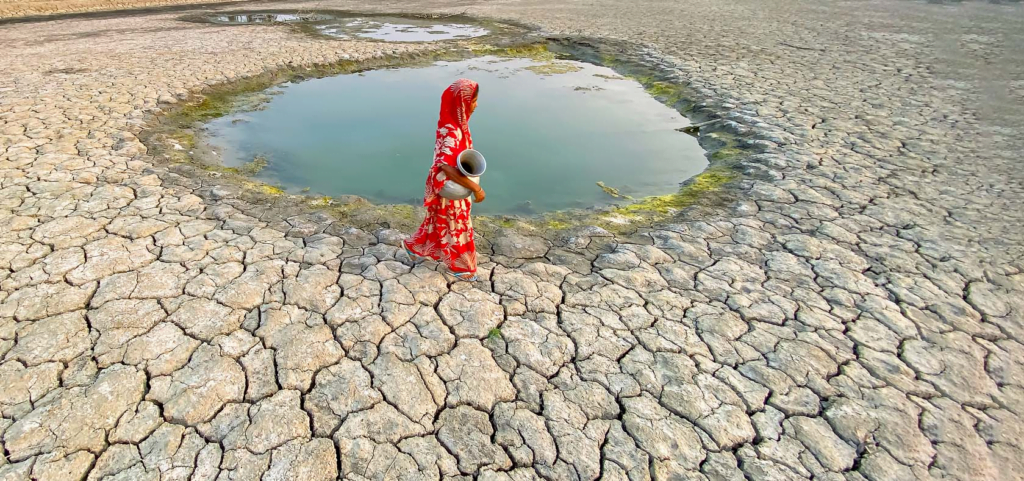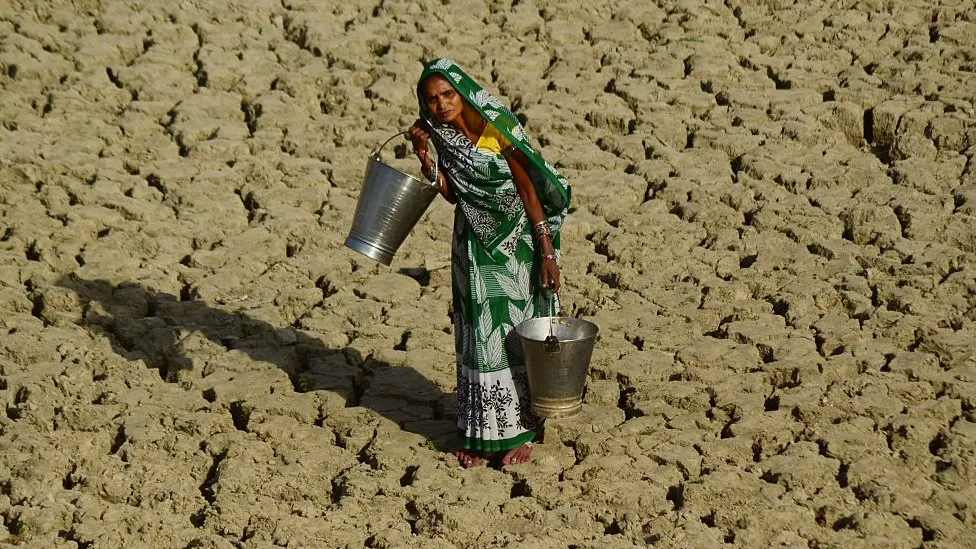Most of the time, our understanding of the climate crisis and our reaction to it have been at odds with one another. Research from around the 1980s onwards has made humanity well aware of the consequences of cutting down forests and burning fossil fuels among other activities that could lead to ecological collapse, and yet our reckless pursuit of comfort and convenience has led the world to where it is today.
Our relative inaction in the face of the immediate crisis has only worsened the world’s condition. Rising temperatures, extreme weather conditions, increasing sea levels and global warming are all symptoms of the climate crisis that substantially affect our collective physical and mental health.
Gender inequality affects social and economic factors and is affected by these in return. There has been substantial evidence to prove that climate change exacerbates these inequalities. For instance, female survivors of climate-related disasters have a higher probability of decreased life expectancy, mental health disorders, gender-based violence (GBV) and complications in childbirth.
And yet the impact that climate change has on sexual and reproductive health and rights (SRHR), especially that of women, has largely been ignored while drafting responses to the effects of climate change.
Climate change and gender inequality
Since the 1990s, India has been undergoing rapid industrialisation and urbanisation. On the one hand, this has led to incredible economic gains evidenced by the country’s ever-growing GDP, on the other hand, this has been accompanied by the doubling of carbon dioxide emissions and moreover, the benefits of industrialisation have not been equally reaped by all sections of the population.
The Intergovernmental Panel on Climate Change (IPCC) predicts an increase in extreme precipitation events during the monsoons and a decrease in non-monsoon season rainfall. This means that several places that routinely receive high rain will be at risk for floods in the monsoon and droughts in the dry season.
The IPCC further predicts a decline in the frequency of cyclones although the intensity of those that occur is likely to increase. This makes coastal regions in India with high population density and poor infrastructure especially vulnerable to flooding and cyclones.

According to a World Health Organisation report, women are more likely to die in cyclones and floods. This disparate susceptibility to natural disasters can be explained by the culturally prescribed roles that women occupy, their biological vulnerabilities and the lack of access to essential goods that they suffer.
Research also suggests that cultural factors may also contribute to their increased susceptibility; women are more likely to stay behind and care for children and the elderly as they await their relatives to return from an evacuation.
Additionally, women across ages are more calorie deficient compared to men which leaves them at a higher risk when it comes to drought-related resource shortages. Their poor baseline nutrition may also hamper survival and escape attempts in the acute stages of a disaster.
Women who give birth in the immediate aftermath of a natural disaster are at a higher risk for complications such as preeclampsia, uterine bleeding and underweight infants. Women, especially those coming from a low socioeconomic background, are prone to physical, sexual and domestic violence. Poor, unmarried, elderly women, adolescent girls and women with disabilities are at greater risk for abuse because they often do not have a steady familial, personal, financial or educational framework that can support them.
The extreme variability of precipitation will be detrimental to the consistent production of crops, livestock and fishery yields. Consequently, there is a higher probability of extended periods of drought which will lead to food insecurity and economic instability. The countrywide loss in agriculture resulting from drought is projected to be over 7 billion dollars by the year 2030, affecting the livelihoods of roughly 10 per cent of the Indian population. This food insecurity will undoubtedly lead to nutritional deficiencies, especially pronounced in younger and unborn children.
Women are sensitive to food scarcity and the nutritional deficiencies that can result from it owing to increased requirements during menstruation, pregnancy and nursing. Maternal undernourishment can be detrimental to neonatal development as it can result in intrauterine growth restriction, pregnancy complications and perinatal mortality.
For example, the Food and Agricultural Organisation (FAO) found that maternal mortality rates are higher by as much as 20 per cent in places where the risk of women dying during childbirth is high.
As a result of the fluctuations in weather and precipitation patterns mentioned above, people become more vulnerable to vector-borne illnesses. The incidence of diseases like Malaria, Dengue, Chikungunya and Japanese Encephalitis, endemic to India will most likely increase. For instance, certain regions in India which are already favourable towards mosquitoes will be even more hospitable when coupled with unplanned urbanisation, unsanitary sewage systems and inadequate water supply.

According to research, pregnant women are particularly prone to Vector-Borne Diseases (VBD). They are more likely to spend most of their time at home, in close quarters with domestic standing water that serves as a breeding ground for mosquitoes and other vectors.
Physiological changes such as higher carbon dioxide production, increased peripheral blood flow and body temperature make a pregnant woman more appealing to a vector. In a study of three districts in India conducted between 2004 and 2006, Malaria was the chief cause of maternal death during pregnancy.
Another problem that is likely to be exacerbated by rapid urbanisation is the availability of safe fresh water, especially in densely populated areas. Water scarcity compels people to drink unsafe water that may be contaminated with disease-causing bacteria or other contaminants.
Waterborne diseases have been a cause for concern in India for several years now. Although the lack of surveillance and inadequate reporting makes it difficult to have exact numbers, 2015 estimates tell us that only 62 per cent of urban communities and a meagre 28 per cent of rural communities have access to improved sanitation.

Because of the cultural role of homemakers that women are conditioned to perform, they are more likely to spend a significant amount of time drawing water and consequently putting them at higher risk for contracting water-borne diseases. Lack of clean water and proper sanitation may also pose serious health challenges to women during menstruation and pregnancy when hygiene is of the utmost importance.
When approached from a socioeconomic lens, we should also note that the health of women who live in financial and social duress is disproportionately affected by water scarcity. In urban areas, poorer people are often unable to afford water pipes and end up having to pay higher prices for water.
How can we affect change?
It is imperative to adopt a social justice framework for climate change mitigation in order to protect human rights, especially that of the more vulnerable sections of the population. Data tells us that the wealthiest countries in the world are responsible for 86 per cent of global carbon emissions, despite having some of the lowest fertility rates. So the onus of climate change mitigation should be placed on governments and the private sector rather than individuals.
With the help of a social justice framework, we can achieve our climate goals without disproportionately jeopardising any gender. Voluntary family planning and education will empower women to make informed choices by improving their access to SRH information and services while also addressing the power dynamics that may interfere with women’s decision-making power.

For example, a disaster management project in Bangladesh that integrated women’s forums to discuss and address issues like reproductive health and pregnancy ascribed its success to the leadership and capacities of women to respond when the region was hit by a cyclone.
The United Nations Framework Convention on Climate Change (UNFCCC) has demanded a gender action plan in order to incorporate a gendered understanding of mitigation, adaptation, technology and finance. Similarly, the 2015-2030 Sendai Framework has announced climate change as a disaster-risk multiplier for women. There have been gradual changes in the inclusion of a gendered understanding of disaster management in the international policy arena, what remains to be seen is its actual implementation.
About the author(s)
Keerthana (she/her) is a third-year English Literature student at St. Stephen’s College, Delhi University. She is interested in analysing art and pop culture through feminist and other sociocultural theories. She enjoys literature, music, films and the occasional cricket match.





